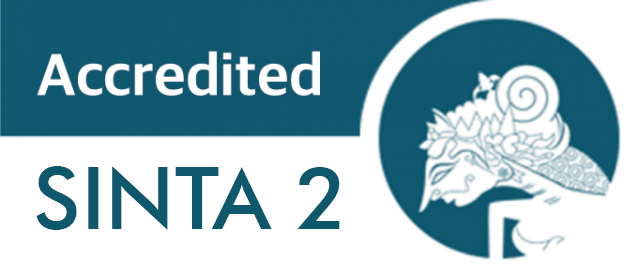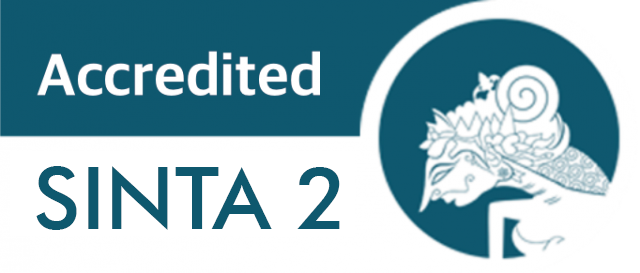Postoperative Depression: Insight, Screening, Diagnosis, and Treatment of Choice
Downloads
Introduction: Postoperative depression is a condition of depressive effects in patients without symptoms of depressive mood that occurs a few weeks after surgery and persists for at least 2 weeks. It generally possesses the same symptoms as major depressive disorder. Review: Their difference is that surgery is the trigger of depression in postoperative depression cases. Postoperative depression is associated with increased patients’ morbidity and mortality, increased the risk of disease complications, reduced postoperative healing process, prolonged the duration of treatment, and reduced patients’ quality of life. Therefore, mental health conditions should always be assessed on patients after undergoing surgery. Postoperative depression therapy needs to consider the benefits of antidepressants and adequate pain management. Antidepressant considerations also need to consider interactions with other drugs. Psychotherapy and cognitive behavioral therapy are also useful in postoperative depression management. Conclusion: This review is aimed to give insight about postoperative depression, its importance, and how to treat it.
Wilson L, Bekeris J, Fiasconaro M, Liu J, Poeran J, Kim DH, et al. Risk factors for new-onset depression or anxiety following total joint arthroplasty: the role of chronic opioid use. Reg Anesth Pain Med. 2019 Nov;44(11):990–7.
Aguayo E, Lyons R, Juo Y-Y, Bailey KL, Seo Y-J, Dobaria V, et al. Impact of New-Onset Postoperative Depression on Readmission Outcomes After Surgical Coronary Revascularization. J Surg Res. 2019 Jan;233:50–6.
Garzon-Muvdi T, Yang W, Luksik AS, Ruiz-Valls A, Tamargo RJ, Caplan J, et al. Postoperative Delayed Paradoxical Depression After Uncomplicated Unruptured Intracranial Aneurysm Surgery. World Neurosurg. 2017 Mar;99:63–9.
Ghoneim MM, O'Hara MW. Depression and postoperative complications: an overview. BMC Surg. 2016 Dec;16(1):5.
Doan L, Manders T, Wang J. Neuroplasticity Underlying the Comorbidity of Pain and Depression. Neural Plast. 2015;2015:1–16.
E. Leonard B. The Concept of Depression as a Dysfunction of the Immune System. Curr Immunol Rev. 2010 Aug;6(3):205–12.
Hinrichs-Rocker A, Schulz K, Järvinen I, Lefering R, Simanski C, Neugebauer EAM. Psychosocial predictors and correlates for chronic post-surgical pain (CPSP) - A systematic review. Eur J Pain. 2009 Aug;13(7):719–30.
Zis P, Daskalaki A, Bountouni I, Sykioti P, Varrassi G, Paladini A. Depression and chronic pain in the elderly: links and management challenges. Clin Interv Aging. 2017 Apr;Volume 12:709–20.
Park S, Kang CH, Hwang Y, Seong YW, Lee HJ, Park IK, et al. Risk factors for postoperative anxiety and depression after surgical treatment for lung cancer. Eur J Cardio-Thoracic Surg. 2016 Jan;49(1):e16–21.
Royse C, Remedios C, Royse A. High thoracic epidural analgesia reduces the risk of long-term depression in patients undergoing coronary artery bypass surgery. Ann Thorac Cardiovasc Surg. 2007;13:32–5.
Geulayov G, Novikov I, Dankner D, Dankner R. Symptoms of depression and anxiety and 11-year all-cause mortality in men and women undergoing coronary artery bypass graft (CABG) surgery. J Psychosom Res. 2018 Feb;105:106–14.
Açıkel MET. Evaluation of Depression and Anxiety in Coronary Artery Bypass Surgery Patients: A Prospective Clinical Study. Brazilian J Cardiovasc Surg. 2019;34(4).
Wilson BR, Tringale KR, Hirshman BR, Zhou T, Umlauf A, Taylor WR, et al. Depression After Spinal Surgery: A Comparative Analysis of the California Outcomes Database. Mayo Clin Proc. 2017 Jan;92(1):88–97.
Lichtman JH, Bigger JT, Blumenthal JA, Frasure-Smith N, Kaufmann PG, LespeÌrance F, et al. Depression and Coronary Heart Disease. Circulation. 2008 Oct;118(17):1768–75.
Löbner M, Luppa M, Matschinger H, Konnopka A, Meisel HJ, Günther L, et al. The course of depression and anxiety in patients undergoing disc surgery: A longitudinal observational study. J Psychosom Res. 2012 Mar;72(3):185–94.
Falavigna A, Righesso O, Teles AR, Conzati LP, Bossardi JB, da Silva PG, et al. Responsiveness of depression and its influence on surgical outcomes of lumbar degenerative diseases. Eur J Orthop Surg Traumatol. 2015 Jul;25 Suppl 1:S35-41.
Werner BC, Wong AC, Chang B, Craig E V., Dines DM, Warren RF, et al. Depression and Patient-Reported Outcomes Following Total Shoulder Arthroplasty. J Bone Jt Surg. 2017 Apr;99(8):688–95.
Kim M-S, Kim SY, Kim J-H, Park B, Choi HG. Depression in breast cancer patients who have undergone mastectomy: A national cohort study. Montazeri A, editor. PLoS One. 2017 Apr;12(4):e0175395.
Baudry A, Anota A, Mariette C, Bonnetain F, Renaud F, Piessen G, et al. The role of trait emotional intelligence in quality of life, anxiety and depression symptoms after surgery for esophageal or gastric cancer: A French national database FREGAT. Psychooncology. 2019 Apr;28(4):799–806.
Dragomir B, Fodoreanu L, Rancea A. The impact of depression and anxiety on the quality of life in nonmetastatic breast cancer patients in postoperative evaluation. Clujul Med. 2013;86(1):48–52.
Trevizan F, Miyazaki M, Silva Y. Quality of Life, Depression, Anxiety and Coping Strategies after Heart Transplantation. Braz J Cardiovasc Surg. 2017;32(3):162–70.
Dujmovic A, Marcinko D, Bulic K, Kisic H, Dudukovic M, Mijatovic D. QUALITY OF LIFE AND DEPRESSION AMONG FEMALE PATIENTS UNDERGOING SURGICAL TREATMENT FOR BREAST CANCER:A PROSPECTIVE STUDY. Psychiatr Danub. 2017;29(3):345–50.
Tindle HA, Omalu B, Courcoulas A, Marcus M, Hammers J, Kuller LH. Risk of Suicide after Long-term Follow-up from Bariatric Surgery. Am J Med. 2010 Nov;123(11):1036–42.
American Psychiatric Association. Diagnostic And Statistical Manual of Mental Disorders Fifth Edition. Washington: American Psychiatric Publishing; 2013.
Özyurtkan MO, Yıldızeli B, Kuşçu K, Bekiroğlu N, Bostancı K, Batırel HF, et al. Postoperative psychiatric disorders in general thoracic surgery: incidence, risk factors and outcomes. Eur J Cardio-Thoracic Surg. 2010 May;37(5):1152–7.
American Psychiatric Association. Diagnostic and Statistical Manual of Mental Disorders. 5th ed. Arlington: American Psychiatric Publishing; 2013.
Stephen A, Lui F. Brief Psychotic Disorder. StatPearls Publishing. 2020. p. 1–26.
Ismail R, Siste K. Gangguan depresi. In: Elvira S, Hadisukanto G, editors. Buku ajar psikiatri. 2nd ed. Jakarta: Badan Penerbit FKUI; 2014.
Sadock B, Sadock V, Ruiz P. Mood disorders. In: Kaplan & Sadock's Synopsis of Psychiatry Behavioral Science/Clinical Psychiatry. 11th ed. New York: Wolters Kluwer; 2014.
Perhimpunan Dokter Spesialis Kedokteran Jiwa Indonesia. Buku panduan gangguan depresi mayor. Jakarta; 2013.
Magni LR, Purgato M, Gastaldon C, Papola D, Furukawa TA, Cipriani A, et al. Fluoxetine versus other types of pharmacotherapy for depression. Cochrane Database Syst Rev. 2013 Jul;
Da Silva FM, Jacob E, Nascimento LC. Impact of Childhood Cancer on Parents' Relationships: An Integrative Review. J Nurs Scholarsh. 2010 Sep;42(3):250–61.
Bushnell GA, Stürmer T, Gaynes BN, Pate V, Miller M. Simultaneous Antidepressant and Benzodiazepine New Use and Subsequent Long-term Benzodiazepine Use in Adults With Depression, United States, 2001-2014. JAMA Psychiatry. 2017 Jul;74(7):747.
Furukawa TA, Streiner D, Young LT, Kinoshita Y. Antidepressants plus benzodiazepines for major depression. Cochrane Database Syst Rev. 2001 Jul;
Sutherland AM, Katznelson R, Clarke HA, Tait G, Beattie WS. Use of preoperative antidepressants is not associated with postoperative hospital length of stay. Can J Anesth Can d'anesthésie. 2014 Jan;61(1):27–31.
Qiu J, Chen W, Gao X, Xu Y, Tong H, Yang M, et al. A randomized controlled trial of group cognitive behavioral therapy for Chinese breast cancer patients with major depression. J Psychosom Obstet Gynecol. 2013 Jun;34(2):60–7.
Copyright (c) 2024 Risza Subiantoro

This work is licensed under a Creative Commons Attribution-ShareAlike 4.0 International License.
1. Copyright of this journal is possession of the Author, by the knowledge of the Editorial Board and Journal Manager, while the moral right of the publication belongs to the author.
2. The journal allows the author(s) to retain publishing rights without restrictions.
3. The articles are published under a Creative Commons Attribution Share-Alike (CC BY-SA) license. Many research funding bodies prefer the CC BY-SA license because it allows for maximum dissemination and re-use of open access materials. Users are free to share (copy, distribute, and transmit) and remix (adapt) the contribution under this license, including for commercial purposes, as long as they attribute the contribution in the manner specified by the author or licensor.




























